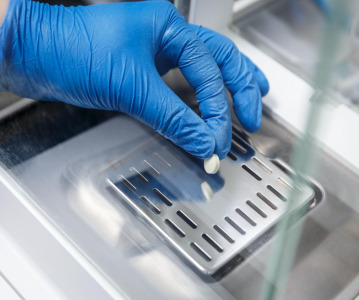Improving blood transfusions 'could be massive'

Researchers have developed a new approach to restoring nitric oxide to blood, paving the way for significant developments.
Researchers have come up with a new approach to restoring nitric oxide (NO) to blood that has been donated, which could revolutionise the detrimental effects that can occur from transfusions.
The findings of the study from Case Western Reserve University School of Medicine have been published in the latest issue of Proceedings of the National Academy of Sciences of the United States of America.
In the US alone, there are 15 million blood transfusions a year, and occurs for all sorts of reasons. This includes increasing the volume of blood where people are unable to produce enough – due to cancer and other diseases for example.
It is also used to replace blood that has been lost due to some traumatic event, like an accident.
There are some reports that suggest that blood transfusions can have a negative impact in some instances, because the quantity of NO reduces speedily after it has been donated.
In normal circumstances, NO tempers blood vessels, allowing red blood cells to access tissue and provide essential oxygen.
"In the blood, NO exists in a bioactive form called S-nitrosohemoglobin (SNO-Hb)," an official release stated.
"The unique process Stamler and team developed to restore SNO-Hb — so-called renitrosylation therapy — could have significant benefits for millions of patients."
Related News
-
News Women in Pharma: Our hopes for 2025 and beyond
Our last instalment for 2024 of the Women in Pharma series brings you messages direct from the Informa Markets CPHI team as they discuss the advice and insights they have carried throughout their roles working at CPHI, and what they hope to see for the... -
News CPHI Milan 2024 - From the Floor
Milan and CPHI welcome you to 2024 CPHI Milan! As we celebrate the 35th edition of our flagship CPHI show, editors Vivian Xie and Lucy Chard bring you the latest from the show floor, conference sessions, and innovative solutions from all exhibitors, at... -
News The BIOSECURE Act: implications for the pharma supply chain
On September 9, 2024, the US House of Representatives voted to pass the bill titled the BIOSECURE Act (the Act), which lists several Chinese companies in the pharmaceutical supply chain. The Act will prohibit American companies from contracting or doin... -
News A Day in the Life of a Global CDMO Chapter Lead – Manufacturing
The 'Day in the Life of' series has covered many aspects of the pharmaceutical pipeline, including R&D and procurement, now we're taking a look at manufacturing from a global CDMO perspective. -
News CPHI Milan Speaker Spotlight: CDMO relations with Pharma and Start-Ups
In the run-up to CPHI Milan, we sit down with some of the experts and thought-leaders speaking at this year’s conferences. -
News Women in Pharma: Advocating for trans healthcare in pharma
In our monthly series on women in the pharmaceutical industry, we interview leading experts in the pharmaceutical supply and value chain to discuss the importance of gender diversity in healthcare, the workplace, and beyond. -
News Updated – Changing abortion pill access according to the US FDA and Supreme Court
After the approval of the medical abortion pill, mifepristone, by the US FDA, states across the USA approach the distribution of the pill differently, some ruling against allowing access to the drug. -
News CPHI North America 2024 – From the Floor
Welcome to Philly! CPHI North America once again graces the Philadelphia Convention Center, 7–9 May 2024.
Recently Visited
Position your company at the heart of the global Pharma industry with a CPHI Online membership
-
Your products and solutions visible to thousands of visitors within the largest Pharma marketplace
-
Generate high-quality, engaged leads for your business, all year round
-
Promote your business as the industry’s thought-leader by hosting your reports, brochures and videos within your profile
-
Your company’s profile boosted at all participating CPHI events
-
An easy-to-use platform with a detailed dashboard showing your leads and performance
.png)




.png)

